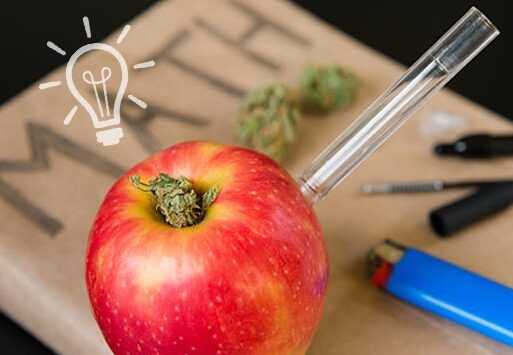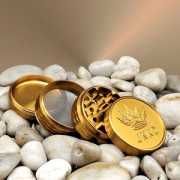In this blog, we’ll tell you all about the benefits of brown rolling papers and why they are so popular these days. We’ll discuss the health benefits of unbleached rolling papers, how they are made from natural materials, and why this is better for both you and the environment. We’ll also give a brief look at the history of brown rolling papers and why more and more cannabis users are choosing this healthier option.
Ordered on working days before 5 p.m. = Shipped the same day! FREE Shipping above € 35,-
Ordered on working days before 5 p.m. = Shipped the same day! FREE Shipping above € 35,-
The Rich History of Cannabis and Hash
The History of Cannabis
Cannabis is not just an ordinary plant; it is a historical goldmine. Did you know that cannabis dates back at least 12,000 years, making it one of humanity's oldest crops? Imagine, this plant was around long before the concept of the pyramids of Egypt even existed.
The roots of cannabis run deep, not only in the ground but also in the history of humanity. It is believed that ancient people used cannabis because of its medicinal properties. Archaeological findings indicate that its use occurred over 5,000 years ago in what is now Romania. Additionally, images of cannabis plants have been found on ancient pottery and sculptures, along with references to cannabis use in ancient texts and writings from various cultures around the world. These diverse sources of evidence underscore the long history of cannabis use by humanity.
Vikings from the 8th to the 11th century, as well as medieval Europeans from the 5th to the 15th century, utilized cannabis for its relieving properties. It was used for various forms of pain relief, such as during childbirth and for toothaches. Medieval Europeans comprised a wide range of people, including farmers, traders, craftsmen, and nobility. The use of cannabis for pain relief was a practice common to both groups, demonstrating the widespread familiarity with and acceptance of cannabis in different cultures and time periods.
In the heart of Europe, Napoleon's troops brought cannabis back to France from Egypt. This occurred during the late 18th and early 19th centuries, around the beginning of the 19th century. This event sparked intellectual interest and experimentation among French literary greats such as Alexandre Dumas and Victor Hugo. It highlights cannabis's influence on European culture and thought, connecting continents and eras.
And here's a fun fact: the very first online sale? Yes, it was a bag of weed, sold by Stanford students to their counterparts at MIT in the early 1970s. Talk about pioneering e-commerce!
The History of Hashish
Hashish, also known as hash, has an extensive history dating back to ancient civilizations in the Middle East and Asia. According to local legends, the origin of hashish takes place in ancient Persia, modern-day Iran, where it was discovered by none other than the legendary king and prophet, King Solomon. These stories, steeped in mystique, add a fascinating element to the history of hashish, emphasizing its deep roots in the ancient cultures of the Middle East. It is said that the Mughal emperor Shah Jahan, especially known for the iconic Taj Mahal, was a passionate lover of hashish. He is even said to have created his own special blend, known as "Majun-e-Jahangiri." These royal connections shed light on the cultural significance of hashish in historical India and illustrate how the product penetrated various layers of society over the centuries.
Hashish was originally developed as a way to efficiently preserve and transport cannabis and quickly became a valuable trade commodity in regions such as Afghanistan and Morocco.
In Afghanistan, hashish has been renowned for its high quality and unique production methods for centuries, including manual rubbing and pressing of cannabis plants into compact blocks. This process results in a potent product with a characteristic flavor and aroma.
Moroccan hashish also has a long history and is known for its diverse varieties and production techniques. The country has a rich tradition of making hashish, using sieve methods to collect and compress the resinous trichomes of the cannabis plant into various forms, such as cakes or balls.
Both variants of hashish have played a prominent role in the culture and economy of their respective regions, leaving a lasting impact on the use and perception of cannabis worldwide. In the 19th century, hashish spread across the world through traders, travelers, and explorers. It became a commodity along ancient trade routes like the legendary Silk Road, which connected Asia with Europe, and played a role in cultural exchanges between East and West.
Today, hashish remains popular for both recreational and medicinal use, often when people prefer not to smoke weed due to its different high. People often use it to relax. But some also use it because it helps with pain, anxiety, and insomnia.
Cultural Icons and Their Cannabis Use
From Shakespeare to Bob Marley, cannabis has been a muse and companion to some of history's most influential figures. For example, traces of marijuana were found in Shakespeare's house, suggesting it may have played a role in his creative genius. Bob Marley, a fervent cannabis user, was even buried with a cannabis flower, symbolizing his connection to Rastafarian beliefs and the plant itself.
Who Are Some Famous Historical Figures Known to Have Used Cannabis?
Cannabis has inspired not only the common man but also historical prominent figures from various fields, such as:
- Victor Hugo and Alexandre Dumas: In the vibrant cafes of Paris, the intellectual elite, including luminaries like Victor Hugo and Alexandre Dumas, formed the Club des Hashischins, where they indulged in cannabis while seeking inspiration and escape. This curious circle explored the depths of creativity, guided by the green muse that cannabis is, laying the foundation for the cultural integration of cannabis.
- Ludwig van Beethoven: Although there is speculation and debate, some believe that Beethoven, plagued by health problems, sought solace in the calming effects of cannabis. The idea that Beethoven may have used cannabis is mainly based on speculation and interpretation of historical documents and personal letters that have been found.
- George Washington: Another historical figure often mentioned in connection with cannabis use is George Washington. Letters have been preserved in which Washington talks about growing hemp on his estate. While it's important to note that hemp was primarily used for industrial purposes at the time, not for recreational use, his involvement in its cultivation is sometimes cited in discussions about cannabis legalization and use.
Which Contemporary Celebrities are Known for their Cannabis Use?
Cannabis and hashish have found their way into the cultural landscape of Europe and beyond, influencing and embraced by icons in art, music, and more:
- The Beatles: In the 1960s, The Beatles led the way in popularizing cannabis with their music and lifestyle, inspiring generations worldwide.
- Pablo Picasso: Although primarily known for his revolutionary art, Picasso was part of the innovative scene in early 20th-century Paris, where cannabis was a common indulgence among artists seeking new perspectives.
- Bob Marley: As a musical icon and advocate of the spiritual and medicinal benefits of cannabis, Bob Marley has left an indelible impression and bridged cultures and continents.
- Snoop Dogg: This well-known rapper is known for openly expressing his love for cannabis and has had a lasting impact on pop culture.
What About Cannabis Regulation in Europe?
Europe's relationship with cannabis and hashish is gradually changing, especially with countries like the Netherlands taking the lead in a more open and regulated approach since the 1970s. The famous Dutch coffeeshops, which facilitate access to cannabis, have become a symbol of modern drug policy.
Recently, countries like Portugal and Spain have also made significant progress by decriminalizing cannabis, reflecting a broader shift towards understanding and integrating cannabis into society, rather than stigmatizing it.
In Spain, each region has its own laws and practices regarding cannabis. Some regions allow cannabis clubs to operate, where members can consume cannabis in a private setting. In Portugal, drug use has been decriminalized, meaning people are not criminally prosecuted for possessing small amounts of drugs for personal use.
The Legacy of Cannabis and Hashish: A Timeless Tale
From ancient healers to modern icons, cannabis and hashish have played a significant role in the history and culture of humanity. Their journey from the fields of ancient civilizations to the coffeeshops of Amsterdam and beyond testifies to their enduring appeal and flexibility. While Europe and the world continue to grapple with cannabis legislation and cultural integration, the rich history of these plants and the people who embraced them remind us of their timeless relevance and potential.
But the story of cannabis and hashish goes beyond laws and debates. It tells of the historical bond between humanity and a plant that has offered enlightenment, inspiration, and connection. It's about the artists, scientists, and leaders who looked beyond the stigma and saw the potential of cannabis to heal, enlighten, and bring joy.
By embracing the legacy of cannabis and hashish, we not only acknowledge a plant but celebrate a profound and enduring relationship that spans millennia. It's a story that sparks curiosity, deserves respect, and inspires a deeper appreciation for the natural world and its ability to influence culture, creativity, and community across the globe.




















Leave a comment